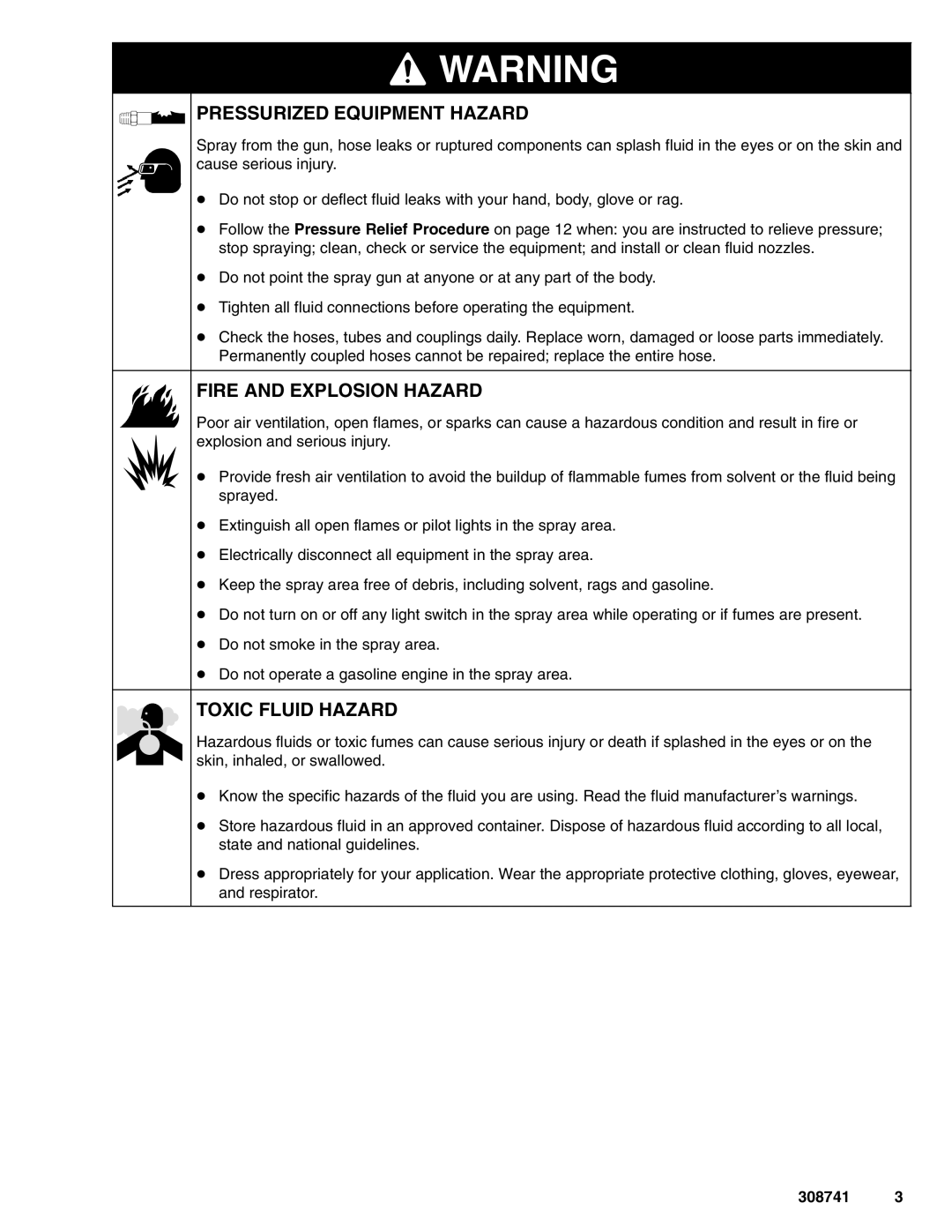
![]() WARNING
WARNING
PRESSURIZED EQUIPMENT HAZARD
Spray from the gun, hose leaks or ruptured components can splash fluid in the eyes or on the skin and cause serious injury.
DDo not stop or deflect fluid leaks with your hand, body, glove or rag.
DFollow the Pressure Relief Procedure on page 12 when: you are instructed to relieve pressure; stop spraying; clean, check or service the equipment; and install or clean fluid nozzles.
DDo not point the spray gun at anyone or at any part of the body.
DTighten all fluid connections before operating the equipment.
DCheck the hoses, tubes and couplings daily. Replace worn, damaged or loose parts immediately. Permanently coupled hoses cannot be repaired; replace the entire hose.
FIRE AND EXPLOSION HAZARD
Poor air ventilation, open flames, or sparks can cause a hazardous condition and result in fire or explosion and serious injury.
DProvide fresh air ventilation to avoid the buildup of flammable fumes from solvent or the fluid being sprayed.
DExtinguish all open flames or pilot lights in the spray area.
DElectrically disconnect all equipment in the spray area.
DKeep the spray area free of debris, including solvent, rags and gasoline.
DDo not turn on or off any light switch in the spray area while operating or if fumes are present.
DDo not smoke in the spray area.
DDo not operate a gasoline engine in the spray area.
TOXIC FLUID HAZARD
Hazardous fluids or toxic fumes can cause serious injury or death if splashed in the eyes or on the skin, inhaled, or swallowed.
DKnow the specific hazards of the fluid you are using. Read the fluid manufacturer’s warnings.
DStore hazardous fluid in an approved container. Dispose of hazardous fluid according to all local, state and national guidelines.
DDress appropriately for your application. Wear the appropriate protective clothing, gloves, eyewear, and respirator.
